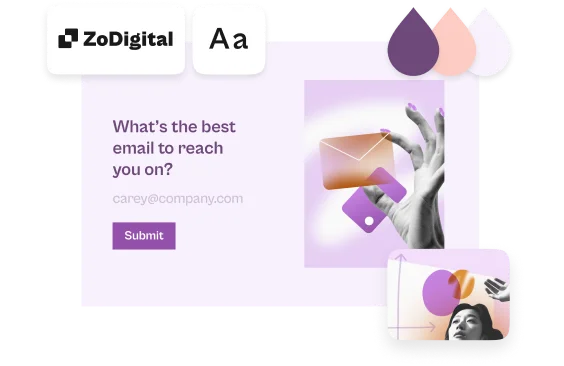What is Logic?
We're currently running an experiment on how to access some features within Typeform. You might see something different in your account than what you see in the article below. Check out this article for a brief overview of the features that have been moved.
Want to add question branching, forks, or conditional questions to your typeform? You need Logic.
Note: Logic isn't available on our mobile builder just yet. Edit your form on a desktop to get the full power of Logic!
Logic lets you create a form that responds to people’s answers. Respondents never have to skip irrelevant questions—because with Logic, they’ll never even see them.
It’s also a great way of segmenting your audience and making the experience as easy as possible for them. The results? Higher completion rates, through a more personal, human experience for your respondents.
Let’s say you want to survey animal lovers. We’d start with a question like, “Are you a cat or a dog person?” But we don’t need dog lovers to see questions about cats, or cat lovers to see questions about dogs.
With Logic, we can show cat lovers one set of questions, while dog lovers see another.
Start by preparing the first Multiple Choice question, and then the two Question Groups, one for cat questions and one for dogs.
Click Logic, then click Add logic, then select Branching.
Click + Add rule to create Logic conditions.
Now, simply set up one Logic that says If “Are you a cat or a dog person?” is “Cat”, then Go to Cat questions, and another similar one for Dog questions.
This is what your Logic setup will look like.
Next, you'll need to add logic to the last question in your first Question Group. We'll add a rule on the last question in the Cat Question Group to Always go to Default end. This way, after the Cat person completes the Cat questions, they'll skip over the Dog questions and see the Default end screen.
Of course, you can do much more than divide people into cat or dog lovers!
If you’re using calculations to keep a score, you can show your respondents different questions or statements depending on their score.
You can set up lots of paths, too. With a Multiple Choice question, you can create different paths for each answer. Logic is very flexible, so you can be creative with it.
Here are more examples of when to use Logic:
- Make quizzes and tests that respond to results. Check these out.
- Conduct market research with forms that segment your audience.
- Create smart shopping carts.
- Hide content from respondents until they answer specific questions by using Branching and calculations.
- Make lead generation more efficient with a responsive template.
- Grow your business with form templates and survey templates that are more conversational.
Tips for building with Logic
Map out your form on paper before you start, like the photo of the cat/dog survey above. It can be really helpful to draw out the structure of your form before you begin, especially if it’s going to be complex. Use your new Logic skills with our survey maker and form builder. Wondering how to ask? Check out our survey questions and employee engagement survey questions guides.


